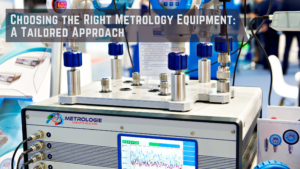The Philippines, with its tropical climate characterized by distinct wet and dry seasons, presents unique challenges for thermal mapping professionals. This non-destructive testing method, which utilizes infrared cameras to visualize temperature variations, is invaluable for various industries, from construction and manufacturing to energy and infrastructure maintenance. However, the seasonal fluctuations in temperature, humidity, and rainfall can significantly impact the accuracy and reliability of thermal mapping results. Understanding these challenges and implementing effective strategies to mitigate them is crucial for ensuring the success of thermal mapping projects in the Philippines. This comprehensive guide will explore the seasonal challenges for thermal mapping in the Philippines and provide practical solutions for addressing them.
Understanding the Philippines’ Seasonal Climate:
The Philippines experiences two primary seasons:
- Dry Season (Tag-init): Typically from March to May, characterized by hot and dry conditions with minimal rainfall.
- Wet Season (Tag-ulan): Typically from June to November, characterized by heavy rainfall, high humidity, and occasional typhoons.
- Transitional Periods: The periods between these seasons experience variable weather patterns.
Seasonal Challenges for Thermal Mapping:
- High Humidity:
- The Philippines’ high humidity, particularly during the wet season, can significantly affect thermal imaging. Moisture in the air can absorb infrared radiation, leading to inaccurate temperature readings.
- This is particularly problematic when inspecting materials with high thermal conductivity, as moisture can mask temperature differences.
- Extreme Heat:
- During the dry season, the Philippines experiences extreme heat, which can cause surface temperatures to rise significantly.
- This can make it challenging to detect subtle temperature variations, especially in materials with low thermal conductivity.
- Direct sunlight can also cause reflective issues, making accurate readings difficult.
- Heavy Rainfall:
- Heavy rainfall during the wet season can make outdoor thermal mapping inspections difficult or impossible.
- Rain can also cool surfaces, masking temperature anomalies and leading to inaccurate results.
- Water ingress into equipment is also a concern.
- Typhoons:
- Typhoons can bring strong winds, heavy rainfall, and flooding, making thermal mapping inspections extremely hazardous.
- These extreme weather conditions can also damage thermal imaging equipment.
- Variable Weather Patterns:
- The Philippines’ weather patterns can be unpredictable, especially during transitional periods.
- This can make it challenging to schedule thermal mapping inspections and ensure consistent results.
- Surface Emissivity Variations:
- Emissivity, the ability of a surface to emit infrared radiation, varies depending on the material and its surface condition.
- Humidity and moisture can affect surface emissivity, leading to inaccurate temperature readings.
- Different materials absorb and emit heat at different rates, and this must be accounted for.
Strategies for Addressing Seasonal Challenges:
- Humidity Mitigation:
- Use High-Quality Thermal Imaging Cameras: Invest in cameras with advanced humidity compensation features.
- Measure Ambient Humidity: Use a hygrometer to measure ambient humidity and adjust readings accordingly.
- Control Environmental Conditions: If possible, conduct thermal mapping inspections in controlled environments with stable humidity levels.
- Consider Time of Day: Perform inspections during times of day when humidity levels are typically lower.
- Use specialized software: Software that can account for humidity is essential.
- Heat Management:
- Perform Inspections During Cooler Times: Conduct thermal mapping inspections during early morning or late afternoon hours when temperatures are cooler.
- Use Reflective Shields: Use reflective shields to block direct sunlight and reduce surface temperatures.
- Consider Indoor Inspections: Whenever possible, conduct inspections indoors where temperatures are more stable.
- Account for Solar Loading: Understand how solar loading effects the surface temperature of materials being inspected.
- Use proper calibration tools: Ensure the thermal camera itself is properly calibrated for the ambient temperature.
- Rain and Typhoon Preparedness:
- Schedule Inspections During Dry Periods: Schedule outdoor thermal mapping inspections during the dry season or periods of minimal rainfall.
- Use Weather-Resistant Equipment: Invest in thermal imaging equipment that is designed to withstand rain and moisture.
- Monitor Weather Forecasts: Closely monitor weather forecasts and reschedule inspections if necessary.
- Develop Contingency Plans: Develop contingency plans for unexpected weather events.
- Indoor Inspections: Conduct indoor inspections whenever possible.
- Addressing Variable Weather:
- Flexibility in Scheduling: Maintain flexibility in scheduling to accommodate unpredictable weather patterns.
- Real-Time Weather Monitoring: Utilize real-time weather monitoring tools to stay informed about changing conditions.
- Detailed Documentation: Maintain detailed documentation of weather conditions during inspections.
- Multiple Inspections: Perform multiple inspections under different weather conditions to ensure accurate results.
- Emissivity Considerations:
- Emissivity Correction: Use thermal imaging software to correct for emissivity variations.
- Apply Emissivity Correction Materials: Apply emissivity correction materials to surfaces to ensure consistent readings.
- Understand Material Properties: Gain a thorough understanding of the emissivity properties of different materials.
- Use reference materials: Use reference materials with known emissivity values.
- Equipment Maintenance:
- Regular Calibration: Calibrate thermal imaging equipment regularly to ensure accuracy.
- Proper Storage: Store equipment in a dry and temperature-controlled environment.
- Regular Inspections: Perform regular inspections of equipment for damage or wear.
- Protect from Moisture: Take extra care to protect equipment from moisture during the wet season.
Importance of Training and Expertise:
- Certified Thermographers: Ensure that thermal mapping inspections are performed by certified thermographers who have the expertise to interpret thermal images and account for seasonal variations.
- Local Knowledge: Professionals with local knowledge of the Philippines’ climate and weather patterns are essential.
- Continuous Learning: Stay up-to-date with the latest advancements in thermal imaging technology and techniques.
Key Takeaways:
- The Philippines’ seasonal climate presents unique challenges for thermal mapping.
- High humidity, extreme heat, heavy rainfall, and typhoons can affect the accuracy and reliability of results.
- Implementing effective strategies to mitigate these challenges is crucial for successful thermal mapping projects.
- Investing in high-quality equipment, training, and expertise is essential.
- Proper planning and documentation are key to ensuring accurate data.
By understanding and addressing these seasonal challenges, thermal mapping professionals in the Philippines can ensure accurate and reliable results, contributing to the safety, efficiency, and sustainability of various industries.




